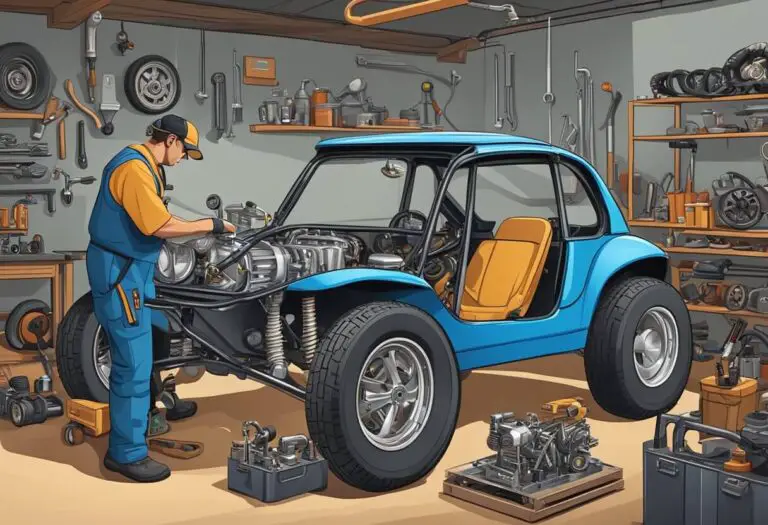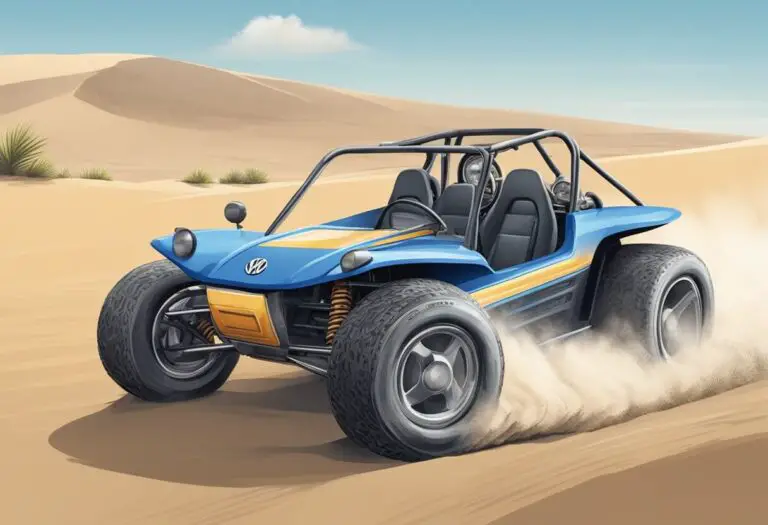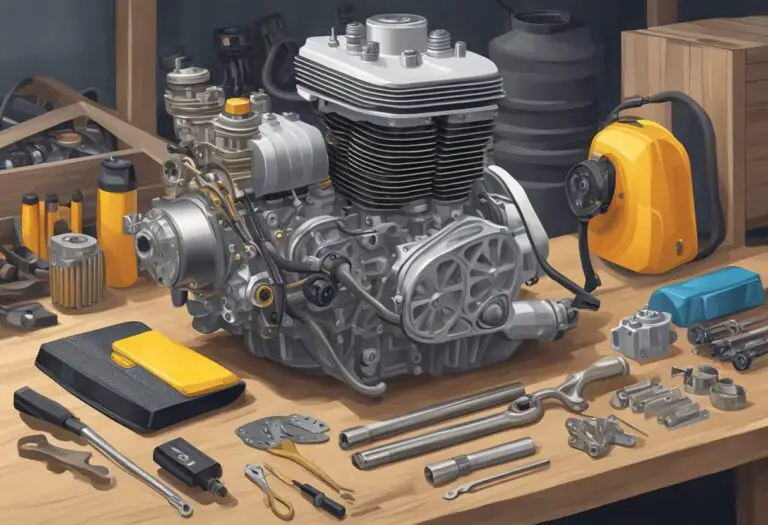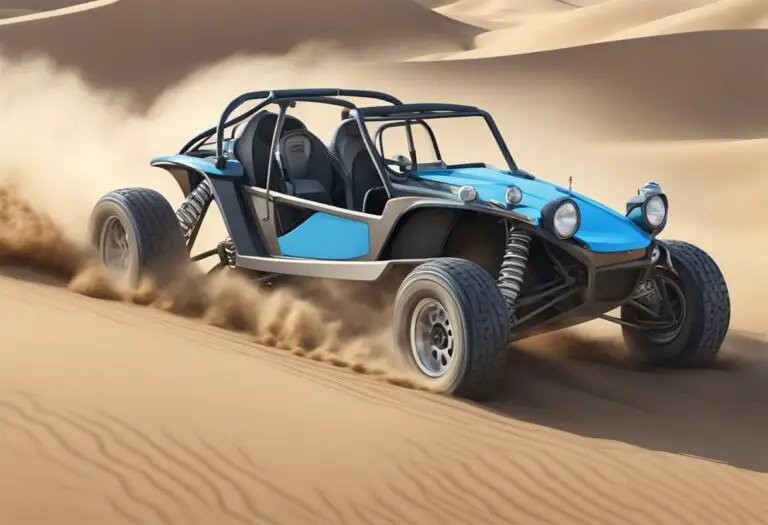Dune Buggy Engine Size: Choosing the Right Motor for Your Off-Road Adventures
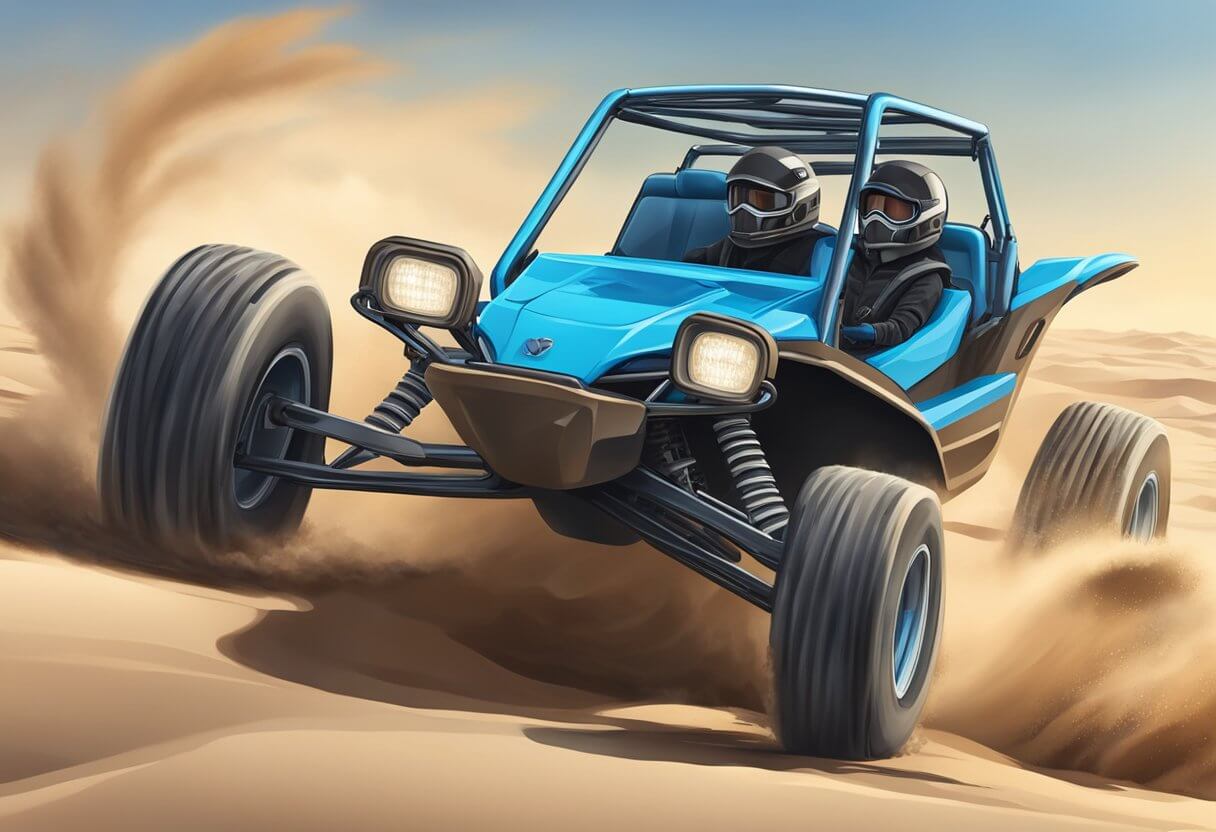
Dune buggies are off-road vehicles designed for recreational use on sand dunes and other sandy terrain. These vehicles are typically lightweight, with large wheels and wide tires that allow them to navigate through rough terrain with ease. One of the most important factors that determine the performance of a dune buggy is the size of its engine.
Understanding dune buggy engine sizes is crucial for anyone who wants to build or modify a dune buggy. The size of the engine determines the amount of power the vehicle can produce, which in turn affects its speed, acceleration, and overall performance. There are many different types of engines that can be used in dune buggies, ranging from small, four-cylinder engines to large, high-performance V8s.
Selecting the right engine size for a dune buggy depends on a variety of factors, including the intended use of the vehicle, the driver’s skill level, and the terrain it will be driven on. Performance modifications can also be made to increase the power and speed of the engine, but it’s important to consider legal and safety considerations when making these modifications. Regular maintenance and upkeep are also important to ensure that the engine continues to perform at its best.
Key Takeaways
- Engine size is a crucial factor in determining the performance of a dune buggy.
- There are many different types of engines that can be used in dune buggies, ranging from small, four-cylinder engines to large, high-performance V8s.
- Selecting the right engine size depends on a variety of factors, including the intended use of the vehicle, the driver’s skill level, and the terrain it will be driven on.
Understanding Dune Buggy Engine Sizes

Dune buggies are off-road vehicles that are designed for sand dunes, beaches, and rough terrain. Selecting the right engine size for a dune buggy is critical to its performance and safety. In this section, we will explore the basics of dune buggy engine sizes, the power-to-weight ratio, and common engine size ranges.
Engine Displacement Basics
Engine displacement refers to the total volume of air and fuel mixture that an engine can burn during one complete cycle. It is measured in cubic centimeters (cc) or liters (L). Generally, the larger the engine displacement, the more power it can produce. However, a larger engine also means more weight, which can affect the dune buggy’s handling and performance.
Power-to-Weight Ratio
The power-to-weight ratio is an important factor to consider when selecting a dune buggy engine size. It refers to the amount of power the engine can produce in relation to the vehicle’s weight. A higher power-to-weight ratio means a more powerful engine and better performance. However, a higher ratio also means more weight, which can negatively affect the dune buggy’s handling and stability.
Common Engine Size Ranges
Dune buggy engines come in a variety of sizes, ranging from small 50cc engines to larger 2000cc engines. The most common engine sizes for dune buggies are between 1100cc and 1600cc. These engines provide a good balance of power and weight, making them suitable for most dune buggy applications.
The table below shows some common engine sizes and their corresponding power output:
| Engine Size (cc) | Power Output (hp) |
|---|---|
| 1100 | 51.7 |
| 1600 | 90-100 |
| 1500 | 108 |
Power outputs are approximate, varying based on engine type, fuel system, and other factors.
Selecting the right engine size for a dune buggy is crucial for performance and safety. Understand engine displacement, power-to-weight ratio, and common engine size ranges to make an informed choice.
Types of Engines for Dune Buggies

When it comes to selecting an engine for a dune buggy, there are several different options available. Each type of engine has its own unique benefits and drawbacks, so it’s important to choose the one that best fits your specific needs and preferences.
Air-Cooled Engines
Air-cooled engines are the most common and popular type of engine used in dune buggies. These engines are known for their reliability, simplicity, and low cost. They are also lightweight, which is important for off-road vehicles like dune buggies.
One of the most common types of air-cooled engines used in dune buggies is the Volkswagen Type 1 engine. These engines are available in a variety of sizes and configurations, making them a versatile option for different types of dune buggies.
Water-Cooled Engines
Water-cooled engines are another option for dune buggies. These engines are typically more powerful than air-cooled engines, which can be an advantage for those looking for more speed and performance.
However, water-cooled engines can be more complex and expensive than air-cooled engines. They also require a cooling system, which can add weight to the vehicle.
Electric Motors
Electric motors are becoming an increasingly popular option for dune buggies. These motors are quiet, efficient, and environmentally friendly. They also offer instant torque and acceleration, which can be an advantage for off-road vehicles.
However, electric motors are still relatively expensive and can have limited range. They also require a battery pack, which can add weight to the vehicle.
Selecting the Right Engine Size
When it comes to selecting the right engine size for your dune buggy, there are several factors to consider. In this section, we will discuss the terrain considerations, intended use, and dune buggy weight.
Terrain Considerations
The type of terrain you will be driving on is an important factor to consider when selecting the right engine size for your dune buggy. If you plan on driving on flat, smooth terrain, a smaller engine may be sufficient. However, if you plan on driving on rough or steep terrain, a larger engine may be necessary to provide the power needed to climb hills and navigate through obstacles.
Intended Use
The intended use of your dune buggy is another important factor to consider when selecting the right engine size. If you plan on using your dune buggy for recreational purposes only, a smaller engine may be sufficient. However, if you plan on using your dune buggy for racing or other high-performance activities, a larger engine may be necessary to provide the power and speed needed to compete.
Dune Buggy Weight
The weight of your dune buggy is also an important factor to consider when selecting the right engine size. A heavier dune buggy will require a larger engine to provide the power needed to move it. On the other hand, a lighter dune buggy may be able to get by with a smaller engine.
In summary, selecting the right engine size for your dune buggy requires careful consideration of the terrain, intended use, and dune buggy weight. By taking these factors into account, you can ensure that your dune buggy has the power and performance needed to meet your needs.
Performance Modifications
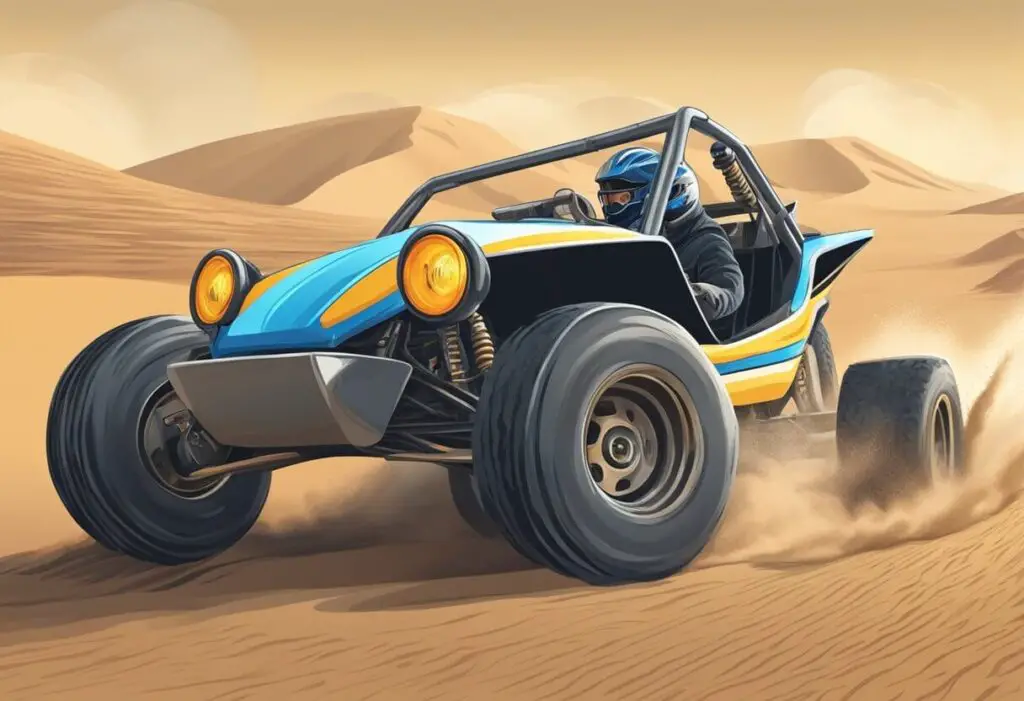
Turbocharging and Supercharging
Turbocharging and supercharging are popular methods of increasing the power of a dune buggy engine. These modifications involve forcing more air into the engine, which allows it to burn more fuel and produce more power. Turbocharging uses a turbine to compress the air, while supercharging uses a belt-driven compressor. Both methods can significantly increase the power output of an engine, but they can also be expensive and require additional modifications to the engine and exhaust system.
Engine Tuning
Engine tuning is the process of adjusting the engine’s settings to optimize its performance. This can involve adjusting the air/fuel ratio, ignition timing, and other factors that affect the engine’s power output. Tuning can be done using aftermarket software and equipment or by a professional mechanic. Proper tuning can significantly improve the performance of a dune buggy engine, but it requires a good understanding of the engine’s mechanics and can be time-consuming.
Aftermarket Upgrades
Aftermarket upgrades are parts that are designed to improve the performance of a dune buggy engine. These can include high-performance air filters, exhaust systems, and fuel injectors. Upgrading these components can increase the engine’s power output and improve its overall performance. However, it is important to choose quality aftermarket parts from reputable manufacturers to avoid damaging the engine or reducing its reliability.
Legal and Safety Considerations

Regulatory Compliance
When it comes to dune buggy engine size, regulatory compliance is a critical consideration. In the United States, dune buggies must comply with state and federal regulations, including emissions standards and safety requirements. The engine size of a dune buggy is an important factor in determining whether it meets these standards.
For example, in California, dune buggies must meet the state’s emissions standards, which are based on the vehicle’s weight and engine size. The larger the engine, the more stringent the emissions requirements. It is important to check the regulations in your state to ensure that your dune buggy meets all legal requirements.
Safety Features
Safety is also a crucial consideration when choosing a dune buggy engine size. The engine power, suspension, and size can all impact the performance and safety of the vehicle. It is important to consider the terrain you will be driving on and the type of driving you will be doing.
Protective gear is also crucial for dune buggy safety. This includes helmets, goggles, and other protective clothing. It is important to ensure that the driver and passengers are protected in the event of an accident.
When choosing a dune buggy engine size, it is important to consider both regulatory compliance and safety features. By choosing the right engine size and taking the necessary safety precautions, you can enjoy your dune buggy safely and legally.
Maintenance and Upkeep
Routine Maintenance
To keep a dune buggy engine running smoothly and efficiently, routine maintenance is essential. Regular oil changes, air filter replacements, and spark plug replacements are some of the most important tasks to perform. It is also important to check the coolant level and ensure that there are no leaks in the cooling system.
In addition to these basic tasks, it is recommended to inspect the engine for any signs of wear or damage. This includes checking the belts, hoses, and electrical connections. If any issues are found, they should be addressed immediately to avoid further damage to the engine.
Engine Longevity Tips
To extend the life of a dune buggy engine, there are several tips to keep in mind. First, it is important to use high-quality oil and filters. This will help to keep the engine clean and prevent buildup of harmful deposits.
Another important tip is to avoid over-revving the engine. This can cause excessive wear and damage to the internal components. It is also important to avoid running the engine at high temperatures for extended periods of time, as this can cause damage to the cooling system and other components.
Regularly inspecting the engine for any signs of wear or damage, and addressing any issues immediately, can also help to extend the life of the engine. Finally, storing the dune buggy in a dry, cool location can help to prevent rust and other damage to the engine over time.

